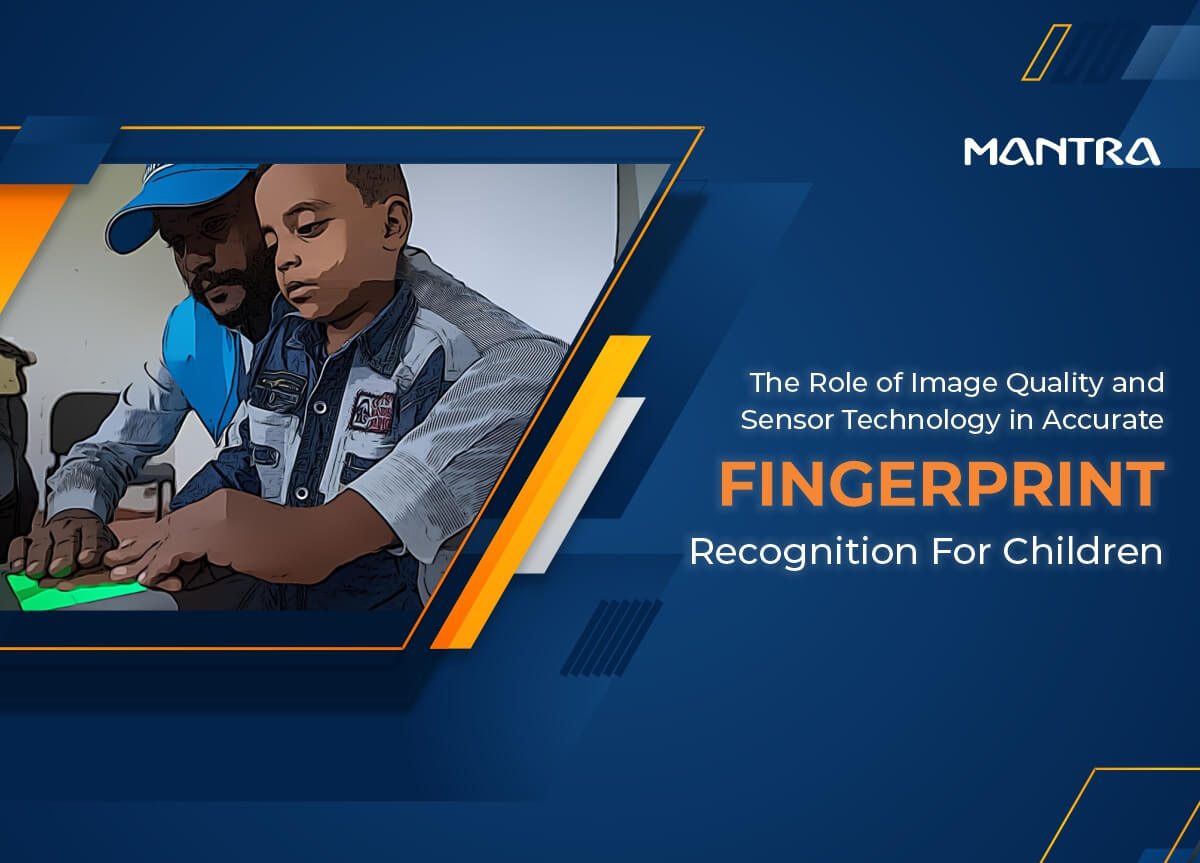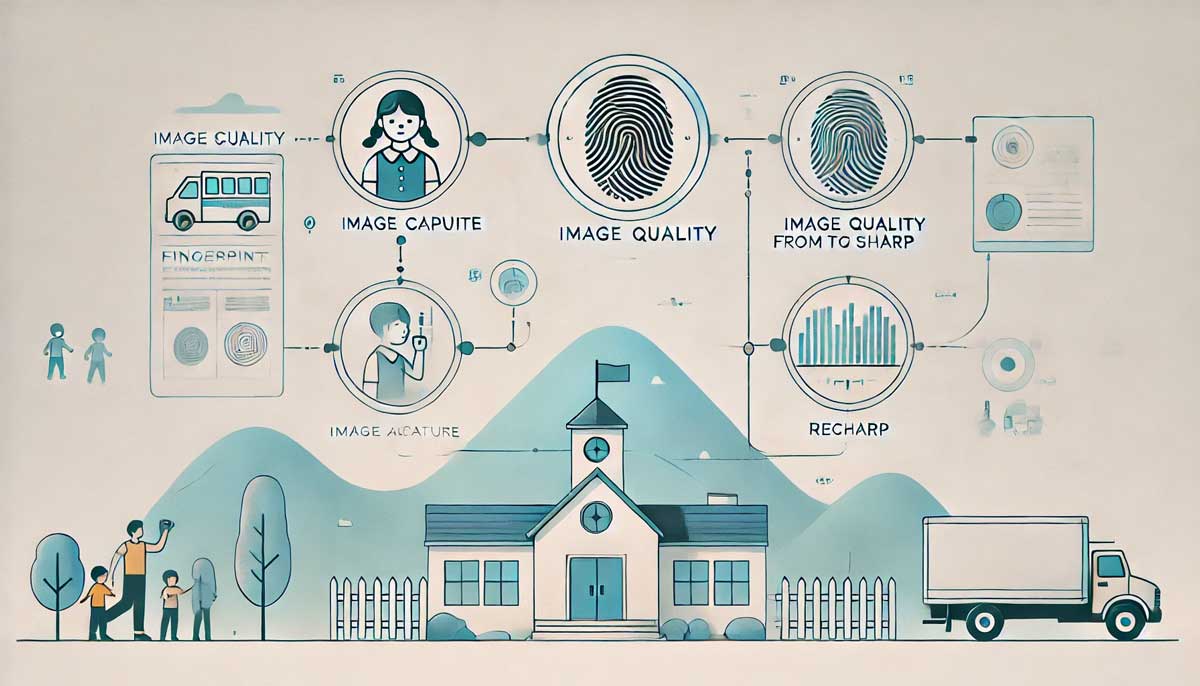
While the practice of automatically recognizing fingerprints for adults is well-established around the globe, the recognition of fingerprints for children presents unique challenges. As children grow and develop, their finger structure changes, their fingerprints become smaller, and their images become poorer due to behavioral factors common to childhood, such as restlessness, short attention spans, and unclean fingers. In order to achieve fast and accurate fingerprint recognition on mobile devices for children, these challenges must be overcome.
Key Challenges in Children's Fingerprint Recognition
Growth and structural changes affect:
Children's fingers as they grow, which can affect the ability of matching systems to verify identities years after they are initially enrolled. As a result, questions have been raised regarding the long-term viability of biometric data captured during the early stages of childhood.
Smaller fingerprints:
Juvenile fingerprints are smaller and contain less information that can be used to correctly enroll and match applicants. As a result, fingerprint recognition systems designed primarily for adult fingerprints will have a technical challenge.
Factors related to behavior:
Children's physical restlessness as well as their short attention spans can lead to poor quality images. A number of factors, such as excessively dry or humid fingers, dirty fingers, and distortions caused by uneven pressure on the scanning surface, further complicate the capture of an accurate fingerprint image.
Research Findings and Technological Advances
A report released by the Joint Research Centre (JRC) of the European Commission in 2013 stated that children ages 6 to 12 are capable of recognizing their fingerprints with a satisfactory degree of accuracy under appropriate conditions. Moreover, more recent research conducted at Michigan State University found that fingerprints acquired from children as young as 6 hours old exhibit distinguishing features that enable recognition, and that fingerprints obtained from children older than 6 months can be recognized accurately using state-of-the-art fingerprint technology.
Acceptance and Viability
It is also important to consider the acceptance of biometric fingerprint recognition for children. A study conducted by the Center for Identity at the University of Texas at Austin found that fingerprint scanning is more widely accepted than other forms of biometric identification. Based on the results of this survey, 57.72% of respondents stated that they were very comfortable with fingerprint scans, a margin of 17.3% over any other method. With 56% of respondents indicating comfort with the use of biometric fingerprints for identity management with minors, this acceptance extends to using biometric fingerprint scans for identity management with minors.
Advantages of Fingerprint Recognition for Children
Fingerprint recognition remains the most viable biometric modality for children for several reasons:
Capturing fingerprints is easier than capturing other biometric traits, such as iris scans, which require the child to stare directly at the camera. As a result, fingerprinting is a more practical option for young children who have difficulty cooperating during the scanning process.
The size and resolution of fingerprint scanners are critical factors that affect the quality of the image. In order to achieve the most accurate results, advanced fingerprint recognition systems must account for variables such as dry or humid fingers, dirty fingers, and distortion due to uneven pressure. The true optical scanners are particularly suitable for these tasks because they can produce high-quality images under these conditions.
The fingerprint scanner must be able to withstand challenging environmental conditions such as direct sunlight, bright lighting, and extreme temperatures. A controlled environment is particularly important in rural or developing regions where controlled environments are less common.
Technological Solutions
A variety of fingerprint scanners were tested by the JRC under conditions typical of children, including glass optical, multispectral, and touchless scanners. The tests simulate the scanning of juvenile fingerprints under four different conditions: optimal (dry, clean fingers), humid (simulated wet fingerprints), sugar (residues from moistened and sugared fingers), and dirt (fingers dipped in granular ash). As a result of these tests, significant differences were observed in the quality of the images, highlighting the difficulties in obtaining high-quality fingerprint images from young individuals.
A true optical fingerprint scanner is the ideal solution. High-resolution images are generated by these scanners using advanced optical technologies, simplifying the process of placing fingers properly and significantly reducing the potential for fraud. A true optical scanner is capable of detecting fingerprints from fingers with a wide variety of conditions, and does not require any maintenance or repairs between scans, making them suitable for use in juvenile fingerprinting applications with heavy demands.
Cost and Practicality
NGOs and government agencies with limited budgets must consider cost as a major consideration. In addition to being effective, advanced technologies such as multispectral scanners and touchless scanners are also extremely costly. A true optical scanner offers a perfect balance between price and performance, making them an attractive option for widespread deployment.

Key Highlights
Children growth:
True optical scanners can adapt to changes in their finger structures, ensuring that biometric data will remain valid for many years.
Exceptional image quality:
These scanners are able to produce high-resolution images even in challenging environmental conditions such as dry, humid, or dirty conditions.
Resilience to environmental conditions:
True optical scanners can operate reliably in extreme temperatures and direct sunlight, making them ideal for field use in a wide variety of conditions.
Cost-effectiveness:
True optical scanners can be demonstrated through their ability to balance price and performance in both urban and rural environments.
Conclusion
A recent study has demonstrated that biometric fingerprinting provides an immediate, practical method for managing individual identities for children as young as 18 months of age. Fingerprint scanners have a significant impact on image quality and the reliability of enrollment and verification operations. These issues are particularly pressing in developing and rural areas where mobile operations and service delivery are prevalent. Using fingerprint scanners to manage children's identity requires sensors that can provide high-resolution scanning for the best quality imaging possible under potentially extreme field conditions. A true optical scanner provides the best balance of cost, accuracy, portability, and reliability, making it the ideal choice for children in need of fast, accurate fingerprint recognition on mobile devices.
Comments